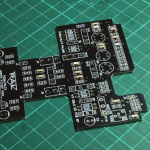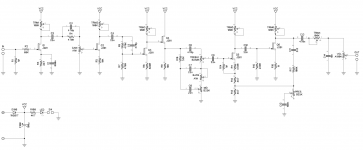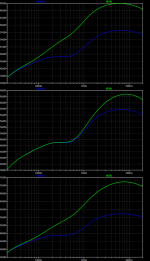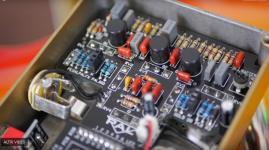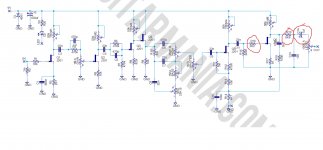Elijah-Baley
Active member
Hello, I have a question about the PAL800, the JCM800 Emulator, the PedalPCB version is the M800:
The schematic is a jfet version of a JCM800 preamp: six transistors with five trimpots. That was the old version of the PAL800.
There's a V3 version, now, that includes the same controls, but with a 3-way toggle switch that change the bass and mid response, especially at low gain setting. At max gain setting (from the official web site information) it doesn't make anything.
Another toggle switch for the #34 mod and a footswitch to alternate the stock high input with the low input.
Here's the official page:

 www.pedalpalfx.com
www.pedalpalfx.com
And this is a gutshot I found:

You can see there's only three... transistors? Those thing are called Q1, Q2 and Q3 and look strange. But just three? And the trimmer? There's just one for the inner master tone control.
The #34 Mod I know is some parts changed or added in the JCM800 preamp. How in this circuit a SPDT switch can make just one change and reach more or less the same mod?
And does the I/II footsiwtch follow the original JCM800 schematic?
What do you think about all this?
The schematic is a jfet version of a JCM800 preamp: six transistors with five trimpots. That was the old version of the PAL800.
There's a V3 version, now, that includes the same controls, but with a 3-way toggle switch that change the bass and mid response, especially at low gain setting. At max gain setting (from the official web site information) it doesn't make anything.
Another toggle switch for the #34 mod and a footswitch to alternate the stock high input with the low input.
Here's the official page:

PedalPalFx - PAL800-V3 GOLD Overdrive
In this new version we keep the original design of the GOLD Overdrive but adding more features making it even more versatile.
 www.pedalpalfx.com
www.pedalpalfx.com
And this is a gutshot I found:

You can see there's only three... transistors? Those thing are called Q1, Q2 and Q3 and look strange. But just three? And the trimmer? There's just one for the inner master tone control.
The #34 Mod I know is some parts changed or added in the JCM800 preamp. How in this circuit a SPDT switch can make just one change and reach more or less the same mod?
And does the I/II footsiwtch follow the original JCM800 schematic?
What do you think about all this?



